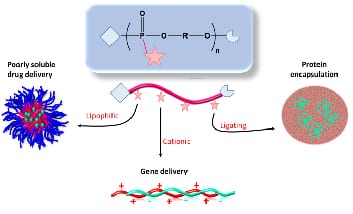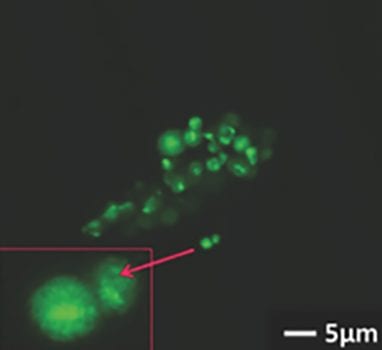Novel synthetic drugs that are currently developed often exhibit a poor solubility in water. Consequently, they are poorly compatible with the body fluids. Further, biotech-sourced drugs including peptides, proteins and genes, emerge as promising therapeutic agents. However, they need to reach the disease site safely and intact. Therefore, pharmaceutic formulations that are able to encapsulate these drugs in properly designed carriers are essential to ensure appropriate drug delivery. Biodegradable polymers were revealed as pertinent materials to build these carriers since after delivery of the therapeutic agent, they degrade and are cleared from the body. In addition, their functionality and properties can be adjusted to adapt them to the requirements of the specific drug to encapsulate and deliver.
Polyphosphoesters with their unique features and diverse functionalities hold tremendous potential to advance drugs carriers.  This emerging class of biodegradable polymers was recently highlighted by Prof. Jérôme and co-workers (University of Liege, Belgium). They report on the most advanced tools to synthesize them efficiently and on functionalization methodologies available to engineer them as (nano)carriers for drug delivery.
This emerging class of biodegradable polymers was recently highlighted by Prof. Jérôme and co-workers (University of Liege, Belgium). They report on the most advanced tools to synthesize them efficiently and on functionalization methodologies available to engineer them as (nano)carriers for drug delivery.
Through the article, the scientists describe the latest trends for the synthesis and modification of these degradable materials. Furthermore, special emphasis is placed on their hydrolytic degradation properties and cytotoxicity studies since biocompatibility and biodegradability are mandatory when biomedical applications are foreseen. Another focus are the emerging drug delivery systems based on tailor-made polyphosphoesters (PPEs). They describe how PPEs of enhanced lipophilic character are inserted in micellar carriers for poorly-soluble drugs, how PPEs decorated with positive charges are efficiently used to complex nucleic acid for gene therapy and how PPEs bearing calcium complexing groups can be used to template calcium carbonate carriers for proteins delivery, illustrating the potential of these polyphosphoesters for future applications in drug delivery and investigating their prospects as new biomaterials.

















